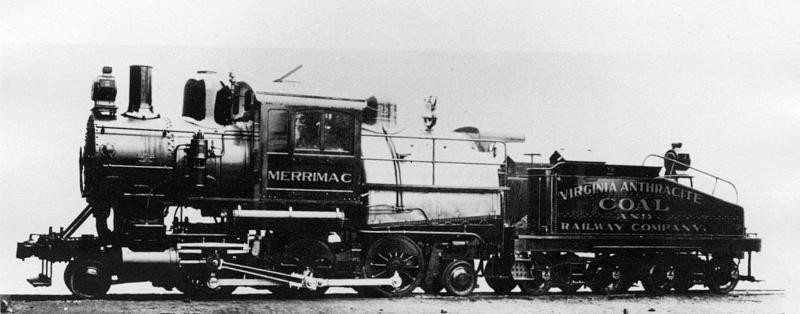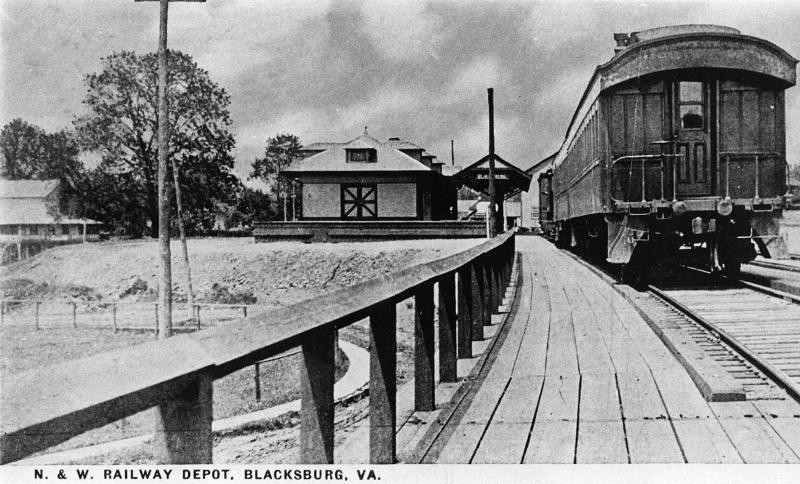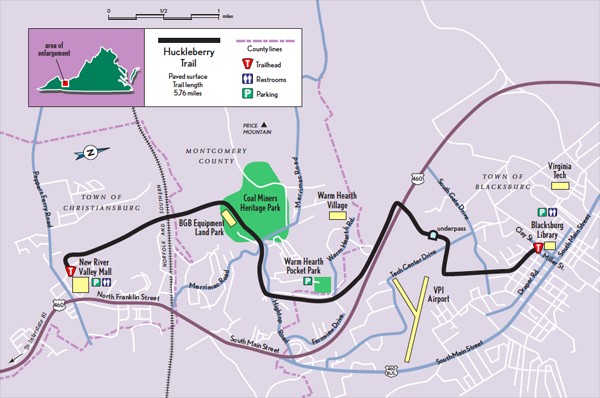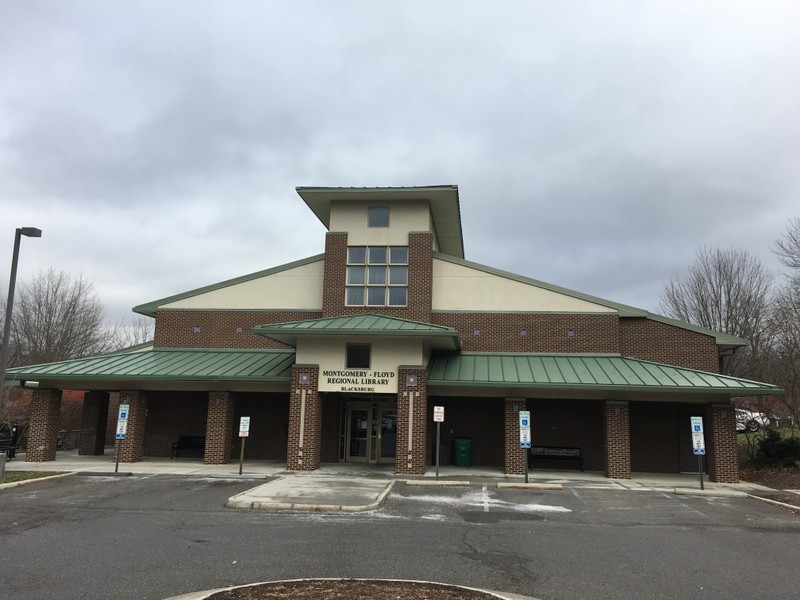Huckleberry Depot and Trail; Montgomery-Floyd Regional Library
Introduction
Text-to-speech Audio
Images
The First "Huckleberry" Train (pictured here in 1904) transported coal to Blacksburg and stopped at a depot where the library is currently located (image reproduced under Fair Use)

Huckleberry Station, Virginia Tech Special Collections (image reproduced under Fair Use).

Huckleberry Trail Map from Friends of the Huckleberry Trail (image reproduced under Fair Use)

Montgomery-Floyd Regional Library, Montgomery County News Messenger (image reproduced under Fair Use)

Backstory and Context
Text-to-speech Audio
The train line that passed through this site in the nineteenth century connected Blacksburg to Christiansburg and also connected the Merrimac Mine to the rail network. Blacksburg was not situated on a main spur of the railroad, but in 1845, Cambria became a stop on the Virginia-Tenessee railroad line. The "Huckleberry" was a rail spur line which led from Cambria to Blacksburg, so named because of the large quantities of huckleberries growing along the tracks. When the train stalled, passengers jumped off to pick wild berries along the route. This small rail line was designed to haul coal, but also offered passenger service and was the main rail service for the city until 1922.
The Huckleberry made its last run in 1958 but faculty in the horticulture department of Virginia Tech saw the potential of the former rail line and converted it into a nature trail. The trail is now eight miles long and passes through the former Merrimac mine, now open as Coal Mining Heritage Park.
The Blacksburg branch of Montgomery-Floyd Regional Library moved to this location next to the trail in 1988, into an existing building, and was renovated in 1996. The Huckleberry Trail passes the north side of the building.
Sources
“Huckleberry Line.” Virginia Tech Magazine. Volume 14, Number 3. Spring 1992.
"The Sixteen Squares of Blacksburg". YouTube. https://www.youtube.com/watch?v=zB1zBWt4KVw, published by the Town of Blacksburg, VA, http://tobweb.org/WalkingTour/.
The First Huckleberry Train in Blacksburg, Virginia, VirginiaTech Library ImageBase URN lh424; CD: Local History - lh341-lh465History of the Trail. Friends of the Huckleberry Trail. Accessed March 05, 2017. http://huckleberrytrail.org/about-the-trail/.
Thomson & Litton. "Library Space Needs and Facility Feasibility Study–Blacksburg and Christiansburg Libraries," 2016. Accessed November 2nd 2019. https://www.mfrl.org/pdf/library-feasibility-study.pdf.
https://imagebase.lib.vt.edu/image_viewer.php?q=lh424
https://imagebase.lib.vt.edu/image_viewer.php?q=lh391
https://huckleberrytrail.org/maps/
https://montcova.com/local-stories/looking-for-a-good-book-oh-try-this/
